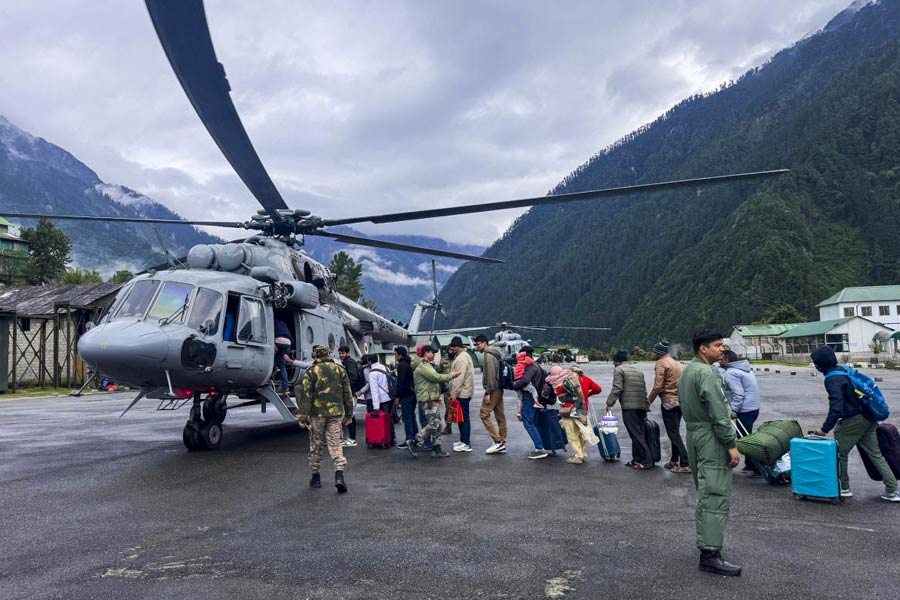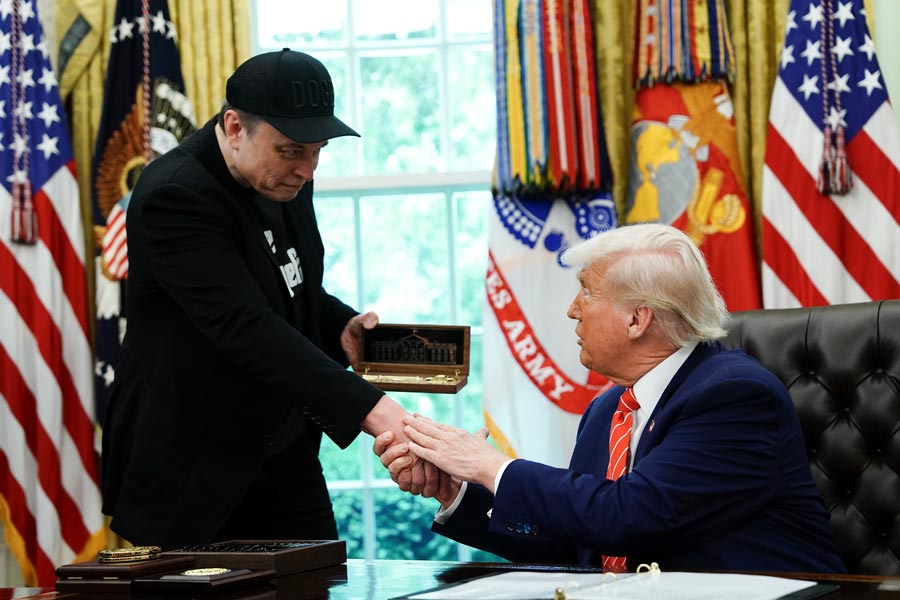
Zoological specimens collected by teachers and students of Calcutta University from across the world for over a hundred years will be exhibited at a museum taking shape at Ballygunge Science College.
The exhibits - numbering more than 4,000 - have been collected since 1914 by teachers and students of the campus that houses the biochemistry, biotechnology and microbiology departments of the university.
The collection has plenty of surprises - among them a mammoth hair collected by Biswamoy Biswas (a member of the The Daily Mail-funded 16-week Abominable Snowman Expedition to the Himalayas in 1954), a Glass Sponge (one of the primitive unicellular organisms) retrieved from an ocean bed and stuffed red pandas and pangolins (both on the IUCN Red List of Threatened Species).
Ena Ray Banerjee, an associate professor at Calcutta University and a prime mover of the project, said the museum is likely to be unveiled by the middle of next year.
Once complete, it will be the only public museum dedicated to zoology in the city. Indian Museum only has a zoology gallery.
The Zoological Service of India (ZSI) has a collection at its New Alipore headquarters but the facility is only open to researchers.
In contrast, the museum coming up at Taraknath Palit Shiksha Prangan - popularly known as Ballygunge Science College - will be accessible to both researchers and general viewers.
University officials said the number of visitors to be allowed inside the museum has to be restricted for security reasons, especially because the zoological treasure trove will be on display close to laboratories where important research is on.
Officials said lack of funds and space constraint have forced the authorities to restrict the museum into two rooms - each measuring 10mX12m - and a corridor on the first floor of Ballygunge Science College.
Expert designers and veteran scientists from the ZSI and other institutions are trying to make the display as attractive and informative as possible.
Research scholars, teachers and professionals can visit the museum through proper channels on all days. On weekends, groups of general viewers (not more than 15 at a time) will be allowed entry through a registered body.
School groups of not more than 25 children at a time and college groups of up to 20 students, whose curricula will be relevant to the exhibits, will be allowed.
The project, funded by private and government sources, has ensured preservation of many rare zoological specimens that were lying in neglect and in danger of getting spoiled.
The museum has its germs in the early days of the institution. Ballygunge Science College - housed in philanthropist Tarak Nath Palit's home - was one of the two campuses with which the University College of Science and Technology came into being. The college opened in 1914 with three departments - zoology, botany and anthropology. "As an ideal hub of scientific research, many were encouraged to explore and collect zoological specimens," said Amalesh Choudhury, one of the early students and professors.
Those were heady times for natural history. T.N. Annandale, a passionate zoologist and anthropologist, had started the Zoological Survey of India in 1916. His infectious enthusiasm brought several Indian taxonomists to the fore.
"To us Annandale was a guru. He travelled widely all over the British colonies, gathering specimens. While most of his personal finds were housed in the Indian Museum and the ZSI, many finds came to Ballygunge Science College, too," said Choudhury, who like many other scientists donated finds to the college in 1923.
Even in the 1980s, specimens were trickling in. In the 1990s, academic interests veered from the basic sciences.
"Shortage of space forced the college to use the areas housing the specimens as staff rooms. The specimens were then neglected and indiscriminately stacked together in the limited space. With time some specimens were pushed out into the corridors. When I joined in 2009, the majority wanted to get rid of the disgusting stuff," said Banerjee, who researches in immunology and regenerative medicine.
"What inspired me was a pair of Siamese calves in a jar in the first-floor corridor. They were in what is often called the 'freaks of nature' section. At the Indian Museum, such specimens attract attention. But here the formalin (a preservative agent) level in the jar went down daily because the lid was not properly sealed. So I decided to do the needful. Even as I began to refill formalin and ethanol and seal the lids, I got my MSc students to take stock of the entire collection as their academic assignment," Banerjee said.
Initially, Banerjee was using some of the funds she had received from various institutions for her own research. "Almost everyone discouraged me. The teachers wanted to know why I was engaging in a field that was not mine. The students were upset by the smell of formalin and the extra work they had to put in. But we did get (perhaps for the first time in 20 years) a basic inventory," Banerjee recounted.
Her perseverance soon brought more funds. But sadly identifying all zoological specimens is proving to be difficult because of the nearly three-decade neglect of the study of taxonomy (a branch of science comprising description, identification, nomenclature, and classification of organisms) in the city.
"Taxonomy is the mother of all sciences but scientists have sent her to an old-age home. Now a good taxonomist is a rarity and the problem is global," said the director of the Zoological Survey of India, Krishnamoorthy Venkataraman.
Banerjee said now that the UGC has banned dissection, the specimens will help students know the species up close.











